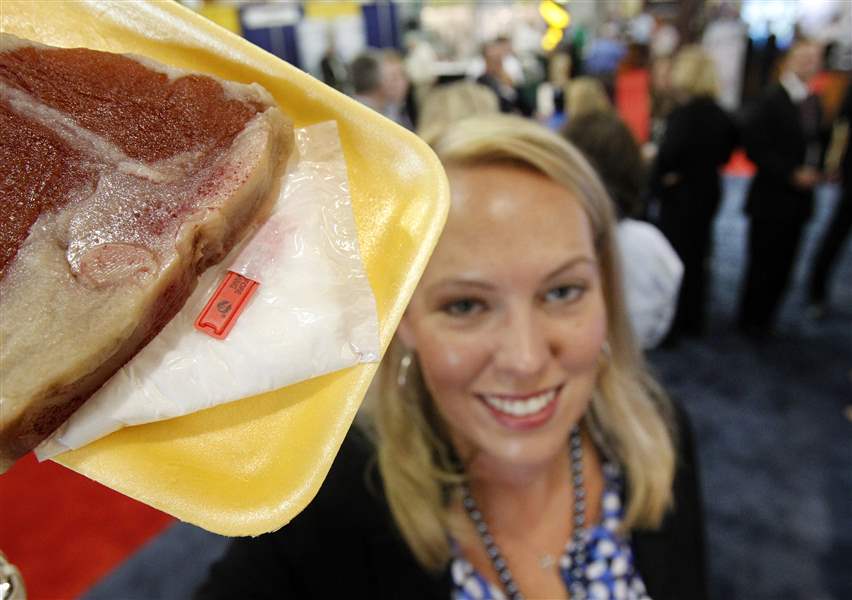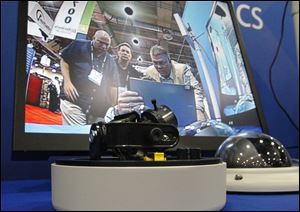
Savvy shoplifters spawning advanced countermeasures
6/23/2011
An electronic label in a meat soaker pad set to trigger an alarm at a store doorway is displayed at a National Retail Federation conference.
DALLAS MORNING NEWS

A security camera from Clinton Electronics gets a workout from participants at the recent loss prevention conference staged by the National Retail Federation at Grapevine, Texas.
GRAPEVINE, Texas -- Retailers never give up fighting the bad guys.
They're adopting new technologies to protect against credit card fraud and counterfeit bills. They're hiring firms to conduct background checks on job applicants. Distribution centers are putting smaller, harder-to-detect GPS devices in cargo shipments.
Ink-dispensing and alarm-setting bulky tags still keep some goods from walking out the door. There's even an alarm tag that can go into the meat soaker pad under a packaged T-bone steak.
"Oh yes, food and alcohol are high-theft items," said Karen Bomber, marketing director at Tyco Retail Solutions, one of the companies pushing its wares last week at the retail industry's loss prevention conference in Grapevine. Attendance is 2,800.
Retail theft keeps rising. Last year, retailers lost $37.14 billion, or 1.58 percent of total retail sales, up from 1.44 percent in 2009, according to an annual study by the National Retail Federation, the conference host, and Richard Hollinger, University of Florida professor of criminology.
The biggest share of those losses, 44 percent, was from employee theft. Shoplifting was second, with 33 percent, Mr. Hollinger said. Administrative errors, vendor fraud, and unknown causes made up the rest.
The results are based on survey responses from 124 companies. Almost 19 percent of employee theft cases involved collusion between internal and external sources, he said.

An electronic label in a meat soaker pad set to trigger an alarm at a store doorway is displayed at a National Retail Federation conference.
"How does that old Pogo comic strip go? We have seen the enemy, and he is us," Mr. Hollinger said.
New technology is about to make some efforts to stop retail theft obsolete, though it won't happen overnight.
Take credit cards, said Joe LaRocca, the National Retail Federation's loss prevention staff expert. "We've spent 20 years adding holograms, expiration dates, setting up authentication numbers to call before a new card can be used -- all sorts of things."
"Now my credit cards are going to be on this," he said, holding up his iPhone.
"New ways to shop will change a lot of what we do in loss prevention," he said.
Cameras trained on cash registers have helped deter theft, but now clerks use hand-held checkout tools in the aisles and even in fitting rooms, he said.
Other retailers have started to follow Apple Inc.'s lead of sending receipts to the customer's email account, Mr. LaRocca said. "Will that make it easier for people to walk out the door with more than what they purchased?"
Store maps are accessible on smart phones, and social media present some scary threats to stores, said Bill Titus, loss prevention manager of Sears Holding Corp. "When are flash mobs organized on Twitter going to start stealing from our stores?"